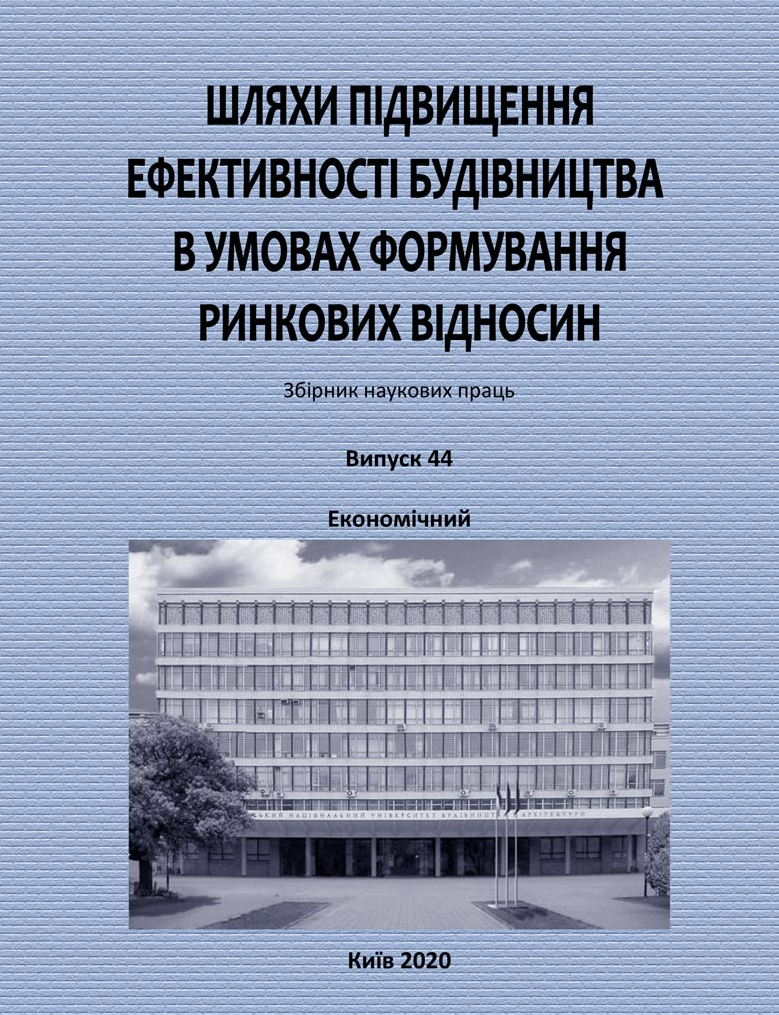Research of the concept of monitoring the activity of the construction company
DOI:
https://doi.org/10.32347/2707-501x.2020.44.100-107Keywords:
monitoring, controlling, concept, functions and methods of management, strategy, management process, analysis.Abstract
The role of monitoring in the current control system is substantiated. At the present stage, domestic construction companies operate in very harsh conditions. Environmental factors (for example, increased levels of competitive activity in the market, inflation, currency exchange rates, etc.) can be both stimulants and where stimuli change the level of competitive position of an enterprise in the market. Having analyzed the existing views on the methodological approach of monitoring the activity of the enterprise, we can conclude that today there is no single methodology for monitoring the activity of the enterprise. The systems of indicators offered by scientists are imperfect because they do not take into account all aspects of financial and economic monitoring of the enterprise. Therefore, it is important for the enterprise to carry out monitoring, which should quickly identify changes in the environment and provide information about them in order to promptly correct the activity of the enterprise, as well as the need to formulate a clear monitoring model that specifies the objects of monitoring within the areas of enterprise functioning, namely: spheres of logistical support, production, financial, marketing, product spheres. The essence and tasks of monitoring are considered as a system of continuous observation of a number of key indicators that characterize the state of an object and its importance in forming the system of management decision-making at the enterprise. The problems of construction enterprises, which characterize the features of the process in modern conditions, are investigated. The main stages of monitoring organization at construction enterprises are determined. The criteria for monitoring by areas of operation are also highlighted. Properly organized system of financial and economic monitoring contributes to the adaptation of the company to changes in the internal and external environment, allows to increase the validity of management decisions by timely development of measures to eliminate the impact of negative factors on the financial and economic performance of the enterprise. Thus, the advantages that an enterprise acquires when organizing the monitoring of economic activity are presented.
References
Shcherbak, V.G. (2005). Enterprise Personnel Management: Sciences. kind. / Shcherbak VG - Kharkiv: KhNEU. - 220 p.
Bielienkova, O. (2018). Service of operational control and its role in business management. Effective economy. 4. - URL: http://www.economy.nayka.com.ua/?op=1&z=6242
Bielienkova, O. (2018). Advantages of introduction of controlling in the planning of activity of construction enterprises. Investments: practice and experience. 10. 47-50.
Krush, P.V. (2012). The Mind and the Policy of the Stalled Anti-Crisis Strategy at Industrial Enterprises. Economic Bulletin of NTUU "KPI". № 9. P. 422-431.
Rudyk, O. R. (2007). Methodical provision of anti-crisis diagnostics of domestic enterprises. Bulletin of the Dnipropetrovsk National University of Railway Transport. Academician V. Lazaryan. Vip. 18. P. 236-240
Epifanova, I.Y. (2016). Monitoring of the Yak instrument of anti-crisis management. Bulletin of ZhNAEU. No. 2 (57), vol. 2. - P. 130-139.
Peckovich, M. (2010). The essence and structures of the decomposition of the system of current control of the enterprise. Bulletin of the Khmelnytsky National University: scientific journal. 3. [T1]. 143 - 147.
Stetsenko, S.P. (2013). Economic security: security and structure. Investment: practice and additional. 24. 104-106. URL: http://nbuv.gov.ua/UJRN/ipd_2013_24_26.
Galicin, V.K. (2000). Monitoring systems. K .: KNEU.
Ukrainska, L.O., Riabyk, H.Ye. (2012), Monitoring organization competitive advantage and competitiveness of enterprises, Problemy ekonomiky. 4. 151-157
Downloads
How to Cite
Issue
Section
License
Copyright (c) 2020 E. Nazarov

This work is licensed under a Creative Commons Attribution 4.0 International License.
Authors who publish with this journal agree to the following terms:
- Authors retain copyright and grant the journal right of first publication with the work simultaneously licensed under a Creative Commons Attribution License that allows others to share the work with an acknowledgement of the work's authorship and initial publication in this journal.
- Authors are able to enter into separate, additional contractual arrangements for the non-exclusive distribution of the journal's published version of the work (e.g., post it to an institutional repository or publish it in a book), with an acknowledgement of its initial publication in this journal.
- Authors are permitted and encouraged to post their work online (e.g., in institutional repositories or on their website) prior to and during the submission process, as it can lead to productive exchanges, as well as earlier and greater citation of published work (See The Effect of Open Access).

